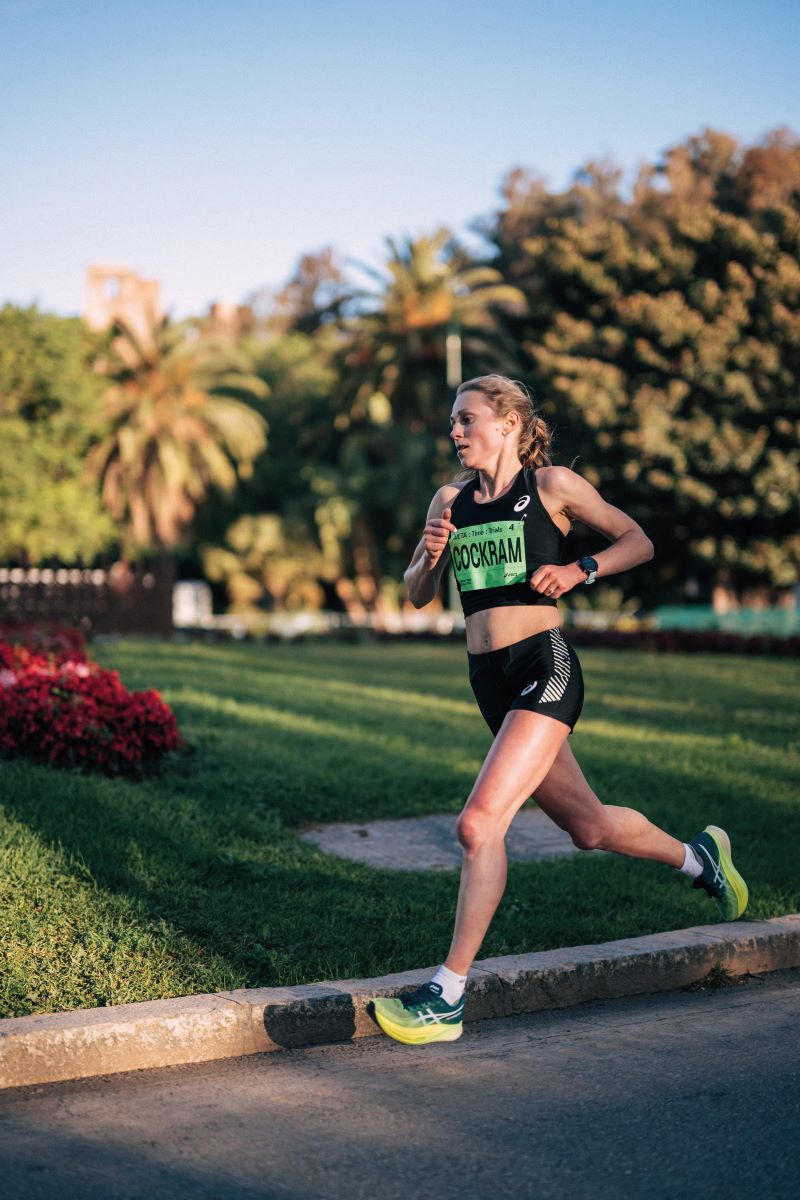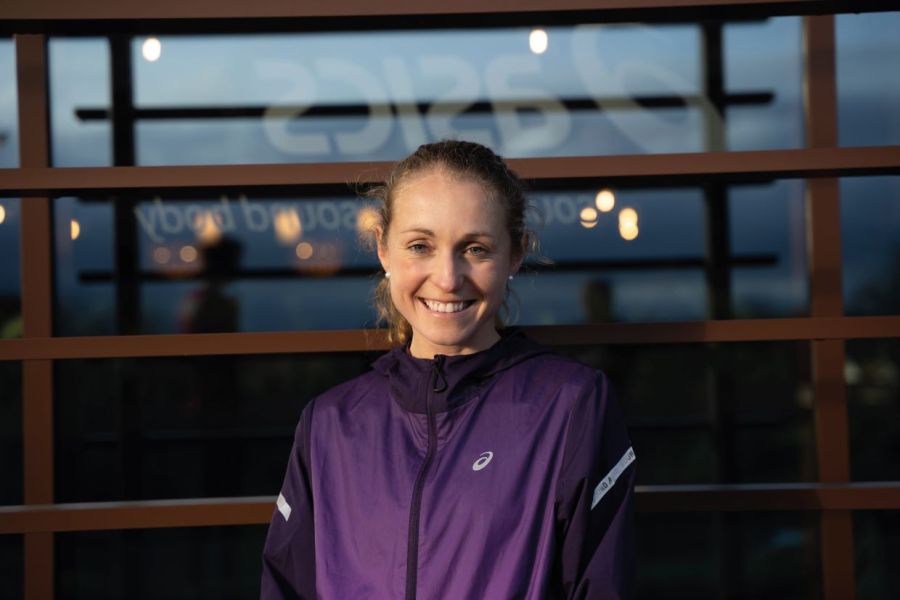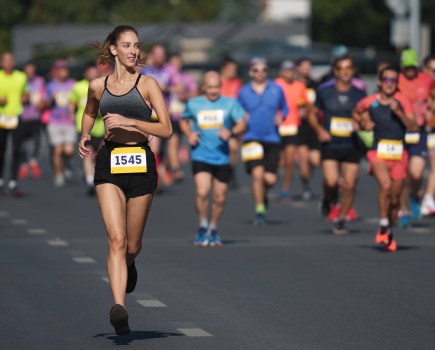Marathon legend Natasha Cockram shares her top training tips ahead of the London Marathon 2023…
Welsh marathon runner, Natasha Cockram, won the LA marathon in 2021. After Covid-19 prevented her completing in last year’s TCS London marathon, she came back stronger than ever to complete the Valencia marathon and beat her own Welsh record of 2:30:03 with 2:26:14, moving from No.30 to No.6 on the UK all-time ranking. Here, she shares her training secrets…
Check out our roundup of the best marathons in the world
Natasha Cockram, tell us about your marathon journey so far.
‘I got into running after being asked to do a cross-country race at primary school. From there, I joined my local running club, concentrated on middle-distance events, and ended up going to university in America where I focused on the 5,000m, 10,000m and cross-country, but I loved road running and had a feeling I’d be good at longer distances. Unfortunately, I was only allowed to compete in the races I was told to, and there was no individualisation.
‘After I finished Uni, I stopped running due to a knee injury, but the fact is, I wasn’t enjoying running anymore. The coaching and training in America was very intense, and being in that environment took its toll. I moved back to Wales and took a year off to let my body heal and to recover mentally. Gradually, I got back into running by jogging with my dog, and a local running club kept bumping into me and saying I should join them.
‘I gave in after a few months and did my first marathon for fun in Dublin in October 2017, achieving a time of 2:49:37 with zero marathon training. Next, I ran the Newport marathon in 2:44:58 after suffering an injury and only doing 12-weeks of cross-training. At that point, I started to wonder what I could achieve if I did proper marathon training, so I got a coach to really give it a go, and the rest is history.’
Learn how to avoid hitting the wall during a marathon
What does a typical training week look like for you?
‘I’m coached virtually, so I train on my own every day, and my mileage depends on where I’m at in my marathon block. During a typical week, I do around 80-100 miles, but at the peak of my training, I’ll do 120 miles. Generally, I’ll do two easy eight-mile runs on a Monday and a hard session on Tuesday, consisting of intervals, maybe 20 x 1K or “in-and-out kilometres”, then Wednesday is made up of a longer, 16-mile recovery run, and Thursday involves a longer pace session. Friday is an easy day with two eight-mile runs, Saturday is another easy day with one 12-mile run. I’ll do my long run work on Sunday, usually 22-to-24 miles.
‘All my training is done on the road. I’ve tried running on softer terrain but the instability doesn’t work for me because I’ve had a few tendon injuries and they can flare up on trails. I feel I’m better off pounding the pavement, and I think it’s important for any level of runner to find what works for them. If I have one downfall, it’s that I don’t really do any strength and conditioning work, except for some rehab exercises based on previous injuries, but I think I’ll get a strength and conditioning coach in the future.’

‘I started to wonder what I could achieve if I did proper marathon training, so I got a coach to really give it a go, and the rest is history.’ – Natasha Cockram (Photo: Albin Durand)
How do you help your body recover on rest days?
‘I don’t plan rest days into my training because I find completely resting is too much of a shock to my body – I prefer to keep my body ticking along with an active recovery run, even if it’s a short four-miler and I’m shuffling, although I might have one rest day every two months if I’m feeling really tired. I used to live off four hours of sleep a night, but I now get a minimum of eight – that’s non-negotiable – and I’ve tried to increase the amount of foam rolling and stretching I do after training. Also, I have a protein/carb drink immediately after training, and I might have an ice bath during the peak of my marathon block.’
Tell us about your nutrition and vital kit
‘Another reason I struggled in the US is because I developed an unhealthy relationship with food. While the university I was at didn’t weigh everyone, they definitely believed the lighter you were, the faster you were… my diet was quite restrictive. It’s something I’ve been really aware of over the past few years, especially since I stepped up a level to marathon running.
‘Thankfully, my partner is a powerlifter so nutrition is very important to him, and we sit down together every weekend to plan out a week of meals, although breakfast is always eggs and avocado on toast. I eat four meals and snacks a day, and if I want a sweet treat, I have it, because I can often struggle to get enough calories in.’
‘In terms of my vital kit, I love training in my Asics Novablast 3 shoes, £135. They’re cushioned, but not too cushioned – that perfect in between – and they’re really light so I can do my hard and fast sessions in them. For racing, I wear the Asics Metaspeed Sky+, £225. They have carbon plates in them, so I like to save them for race day to give me an extra boost, and I find they help me recover from marathons much quicker because of how cushioned they are.’
Finally, what’s been your greatest achievement to date?
‘Running the World and Olympic qualifier standard with a time of 2:26:14 in December’s Valencia marathon was a massive PB for me and a massive jump in my progress. On paper, that’s my best result, but I also think returning to running after giving up is actually just as big of an achievement. I was in such a bad place when I stopped, so to get back to running and doing what I absolutely love is amazing.’
Natasha Cockram is sponsored by ASICS. To find out more visit asics.com
Words: Joanna Ebsworth | Photography: Albin Durand (@_albin_)







